Last-Minute NYC Holiday Gift Guide 🎁
We’ve created a holiday gift guide with presents for the intrepid New Yorker that should arrive just in time—



The vibrant foot traffic visible on St. Marks Place each night, with the street’s iconic St. Marks Hotel as the backdrop.
“A lot of groups complain about new groups coming in and replacing [the old] but if you’re not a Lenape, I don’t have sympathy for you,” joked author Ada Calhoun as she reflected on the early history of New York City’s St. Marks Place. Calhoun has just released her new book, St. Marks is Dead: The Many Lives of America’s Hippest Street and to celebrate, The Cooper Union held a ragin’ launch party in their Great Hall, conveniently located just a block south of St. Marks Place. (Photos by Mario Morgado, courtesy of The Cooper Union.)
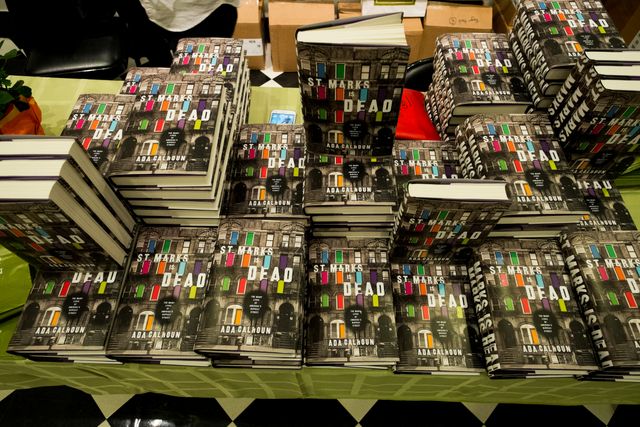
Courtesy of The Cooper Union/Photos by Mario Morgado
The book traces the street’s incredible and lively history, starting as early as the Dutch settlers. As we’ve previously covered in our history of the street, St. Marks Place has seen countless movements, revolutions, and fads. Calhoun described it as a place where people could run away or escape to. Thus, it’s been home to the rebels and outcasts of almost every era. Gangsters and speakeasies occupied the street during Prohibition. It went from being a jazz epicenter in the 1950s and to the home of hippies and anarchists in the 1960s. By the 1980s, it was a scene for skaters and “crusty punks.” It’s been a shelter for gays and junkies, with hot spots like Boy Bar and numerous bath houses, and has seen the likes of Leon Trotsky, Thelonius Monk, Andy Warhol, The Ramones, Beastie Boys, W.H. Auden, and Keith Haring. And after each group is replaced with a new group, the former claims, “St. Marks is dead.”
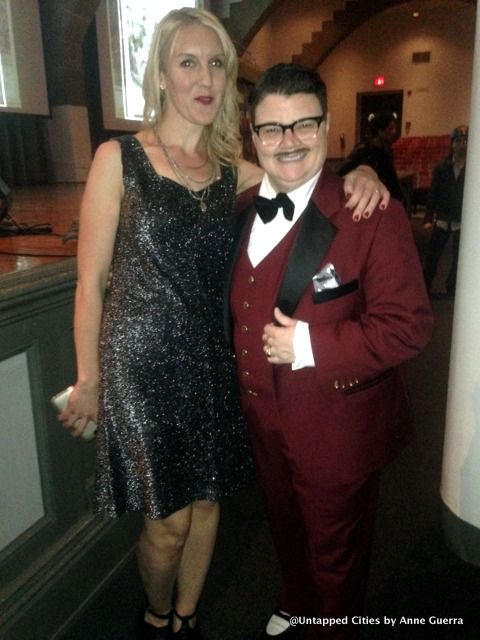
Author Ada Calhoun with friend and comedian, Murray Hill
There was without question a sense of community and culture at the Cooper Union event. The book release was filled with several influential St. Markers, many of whom were personal friends of Calhoun. Murray Hill, a comedian and character on the street, introduced the author as an old friend.
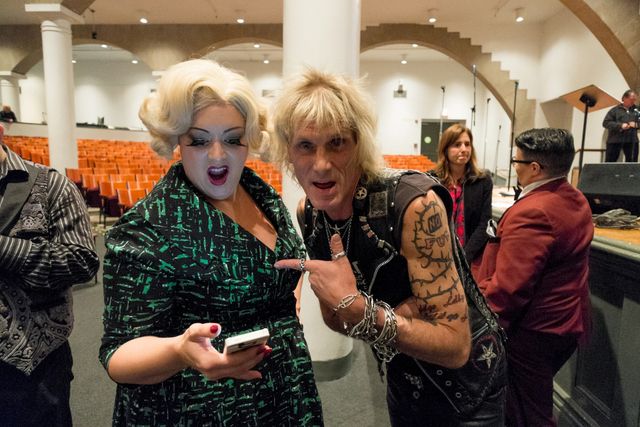
St. Marks legends Dirty Martini and Jimmy Webb at The Cooper Union. Courtesy of The Cooper Union/Photos by Mario Morgado
As Calhoun discussed the street’s many eras, different sections of the audience would hoot and holler, indicating they were from that period. In fact, many of the vintage photos displayed on the slideshow behind Calhoun were taken of people at the event. People also dressed in “traditional” punk garb – leather jackets, dyed-hair and Doc Martens – typical of the street’s grungier side.
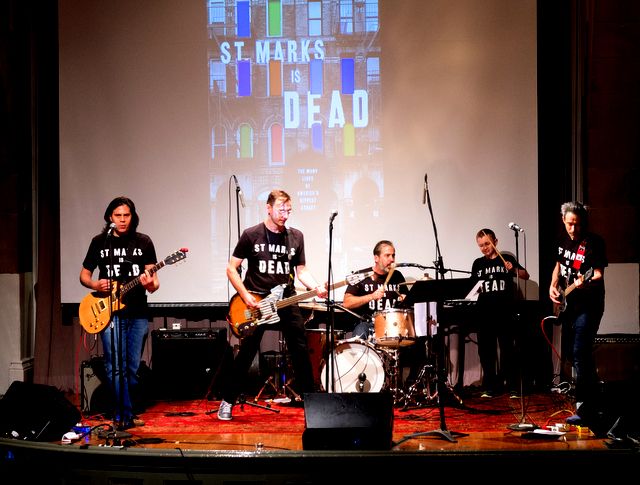
Punk rock cover band, The St. Mark’s Place Zeroes featuring Adam Horovitz (Ad-Rock), Neal Medlyn, Christopher Carmine Covelli (Julie Ruin) and more, perform at The Cooper Union. Courtesy of The Cooper Union/Photos by Mario Morgado
At the end of Calhoun’s discussion of the book, there was a live punk rock cover band called the St. Marks Zeroes (a nod to Mr. Zero, an early influence on the street during the Great Depression). The band featured Neal Medlyn (Champagne Jerry), Adam Horovitz, and Carmine Covelli, with special performances by Kathleen Hanna, Bridgette Everett, and Erin Markey.
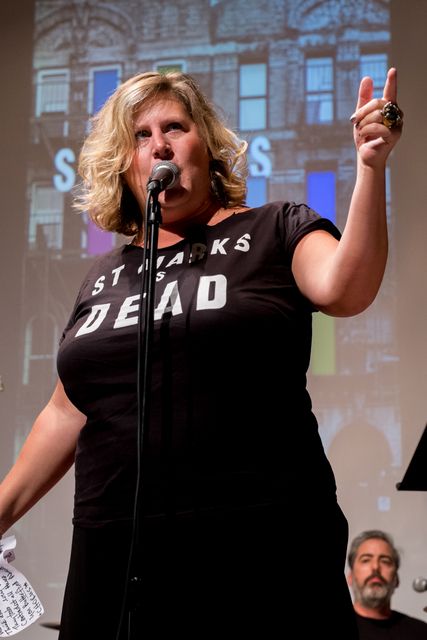
Bridgette Everett joined St. Marks Zeroes on stage. Courtesy of The Cooper Union/Photos by Mario Morgado.
The playlist, written on a pizza plate, was all St. Marks-centric, with lyrics like “that’s where the junkies used to play…. down on Avenue A” and “rock n’ roll-ower East Side, we don’t give a damn if we live or die.” The song “Detachable Penis,” was also a hit. As the band performed, Calhoun sat in the front row with her son, bobbing her head along to the songs.
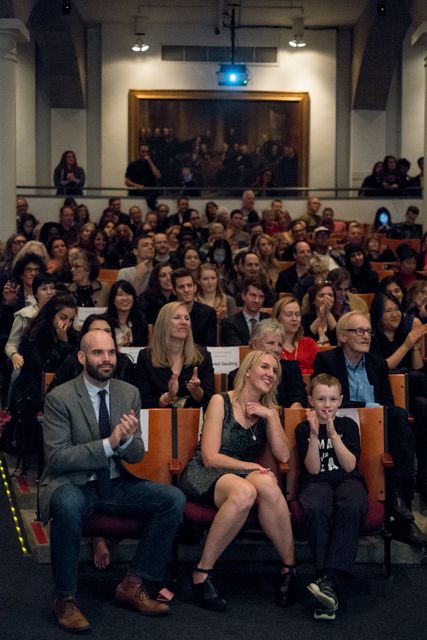
Ada Calhoun enjoys show with her editor, Tom Mayer, and her son. Courtesy of The Cooper Union/Photos by Mario Morgado
After the performance, The Cooper Union held a reception with free wine and beer with a book signing by Calhoun.
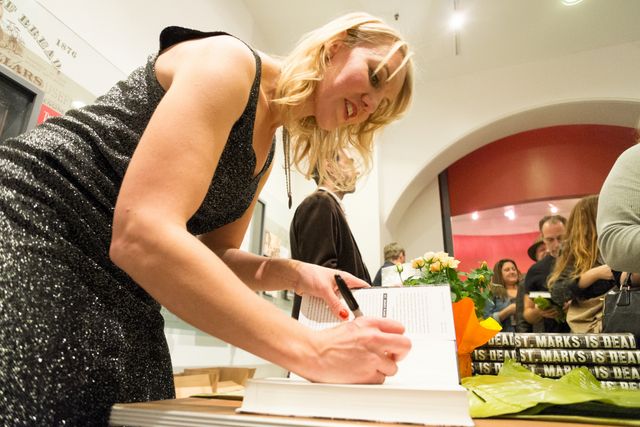
Author Ada Calhoun signs books at The Cooper Union. Courtesy of The Cooper Union/Photos by Mario Morgado
To order Ada Calhoun’s St. Marks is Dead, click here. Next take a nostalgic walk down St. Marks and learn more about its history between 2nd and 3rd Avenues.
Subscribe to our newsletter